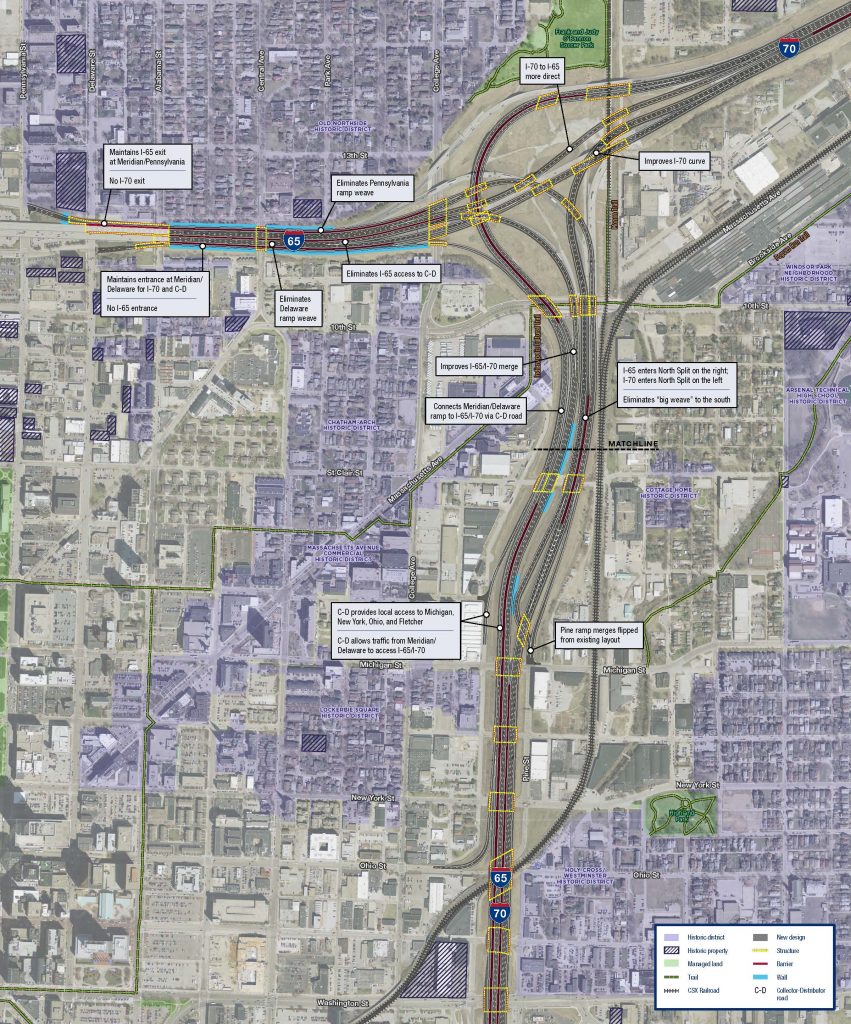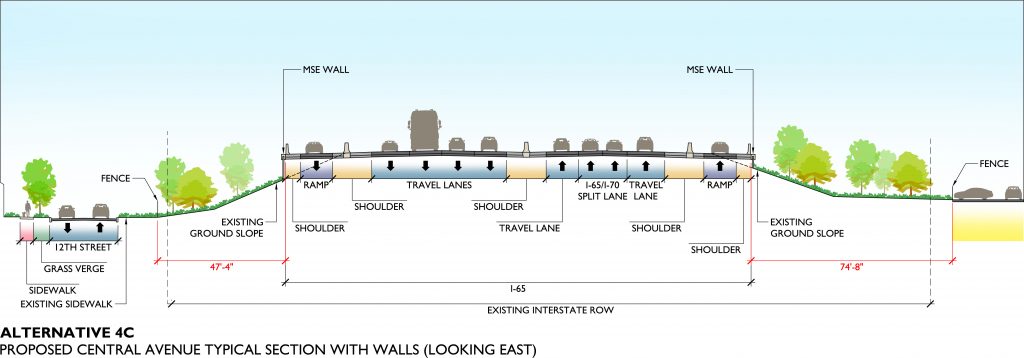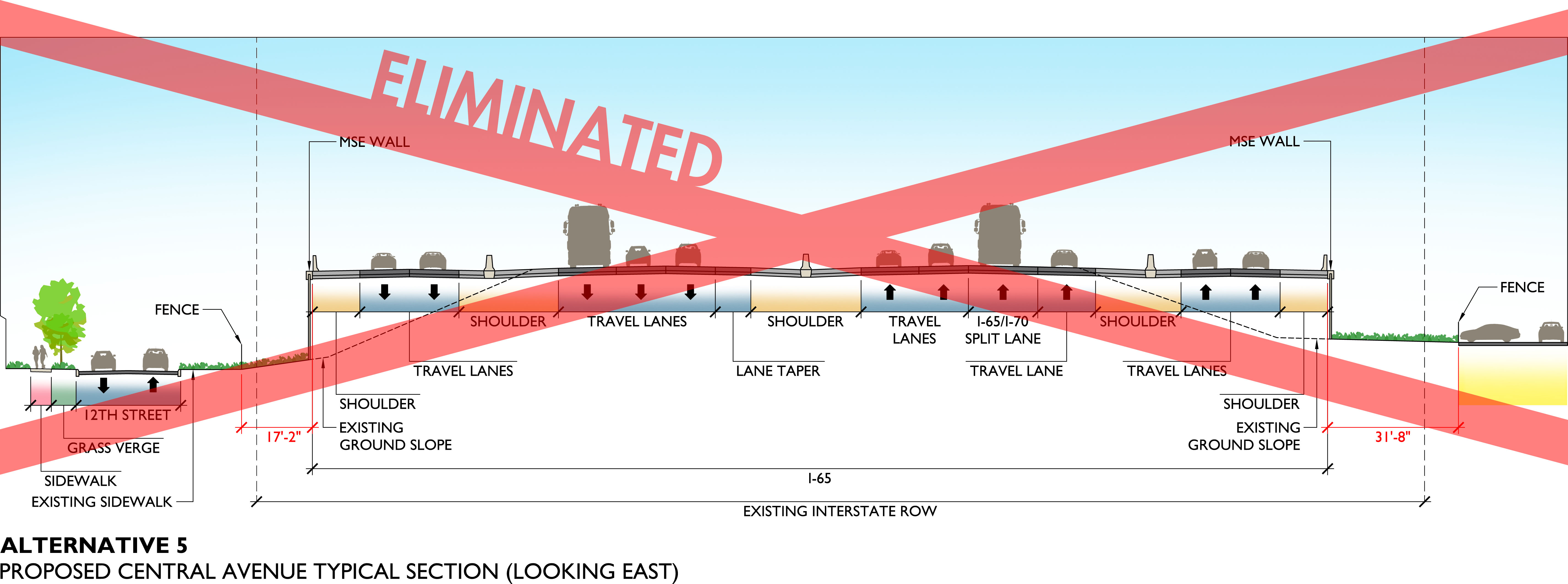Alternative 4c would meet the project purpose and need effectively by replacing deteriorated pavement and bridge infrastructure, improving safety at the highest crash locations and reducing traffic congestion by removing existing bottlenecks. Improvements would be made throughout the interchange, but a key area of improvement would be the west leg, where existing weaving areas – where traffic is forced to cross paths – create the greatest hazards and bottlenecks in the interchange.
Based on a review of the trade-offs between benefits and impacts of the alternatives, INDOT has determined that Alternative 4c would provide the best balance of meeting safety and mobility needs while minimizing impacts on adjacent neighborhoods. Subject to input from agencies, advisory committees and the public during the comment period of the screening report, Alternative 4c will be the preliminary preferred alternative to be analyzed in detail in the EA.
 OVERVIEW
OVERVIEW
- Replaces bridges and pavement
- Improves safety at the most hazardous locations in the project area
- Removes two major bottlenecks on the west leg
- Configures ramps to serve single-lane ramps on each side of the I-65 mainline
- Minimizes footprint by configuring ramps in the interchange to maintain four lanes each way on the west leg
- Adds no through lanes
- Estimated cost is $225-$275 million
See additional maps of Alternative 4c
CHANGES TO THE INTERCHANGE AND WEST LEG
- Maintains access from the Meridian/Delaware Street entrance ramp to eastbound I-70 and southbound I-65 via collector-distributor (C-D) road that also serves Ohio and Michigan streets
- Eliminates weaving movements by allowing entry or exit only at the adjacent interstate lane
- Provides access to the Meridian/Pennsylvania Street exit ramp from northbound I-65, but not from I-70
- Allows access for southbound I-65 traffic to eastbound I-70, but not the C-D road that serves Ohio and Michigan streets
CHANGES TO AESTHETICS
- Concrete barrier walls would be installed between certain lanes to prohibit movements that would require vehicles to cross paths
- The additional width would require retaining walls approximately 7 feet to 11 feet maximum height at some locations to retain construction within the right of way. Retaining walls would be minimized or possibly eliminated along the outside of the west leg as engineering design is refined
- The footprint would be widened by about 21 feet on the south side and 24 feet on the north side
- Retaining walls would not be necessary along the outside of the east and south legs
The need for walls at all locations would be confirmed based on more detailed design during the EA.
If the need for exterior retaining walls is confirmed, INDOT will seek community input regarding a low wall at the bottom of the slope or low wall at the top of the slope, and the potential for landscaping.
TYPICAL SECTION COMPARISONS
Existing Typical Section

Alternative 4c Typical Section

Alternative 5 (Eliminated) Typical Section

